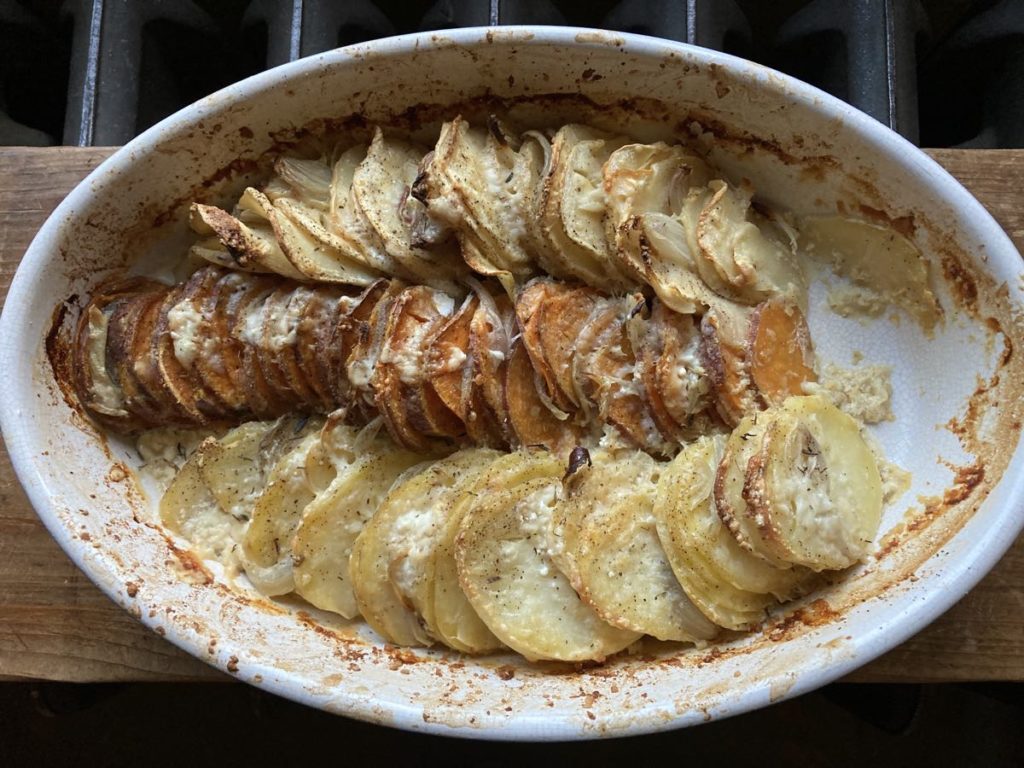Storage Share, Nov 18/19, 2021
- On: November 17, 2021
 0
0
Good bye for now!
Thank you so much for joining our farm this season. We hope you stay safe and warm this winter, and that this big delivery brightens your winter meals.
Beth and Steve
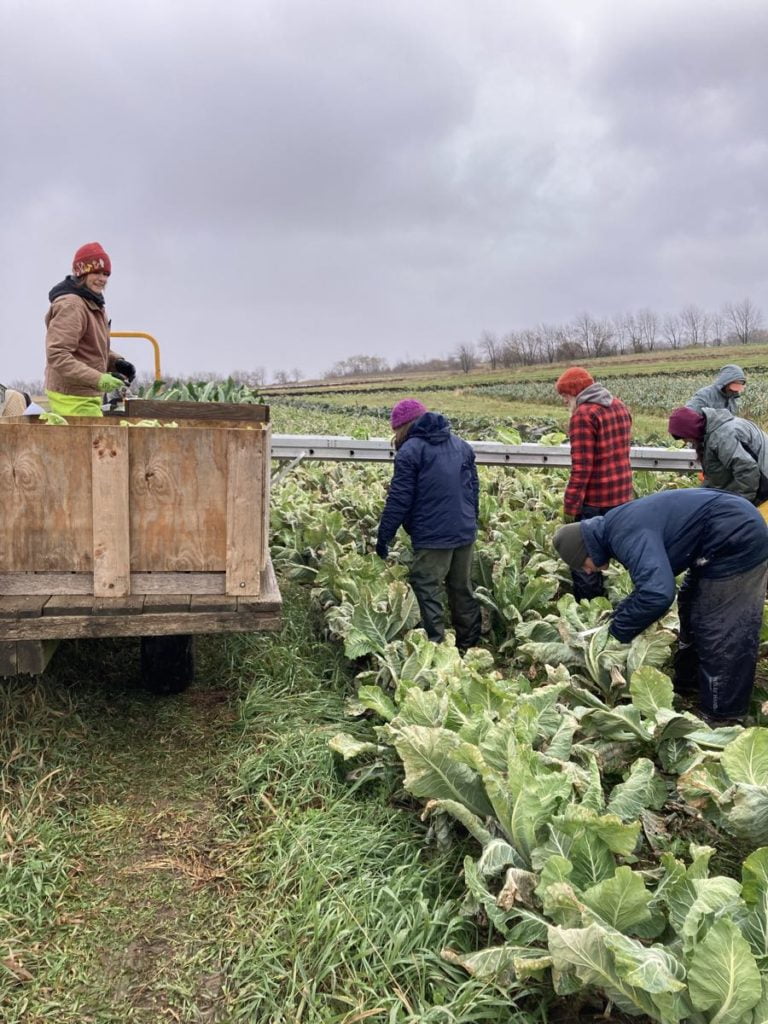
We’ve packed both cauliflower and Romanesco in the Storage shares. These crops were late this year because of the warm weather in September and October but the heads sized up eventually! The outer leaves were nipped by frost but the heads were not.
Storage Share this week
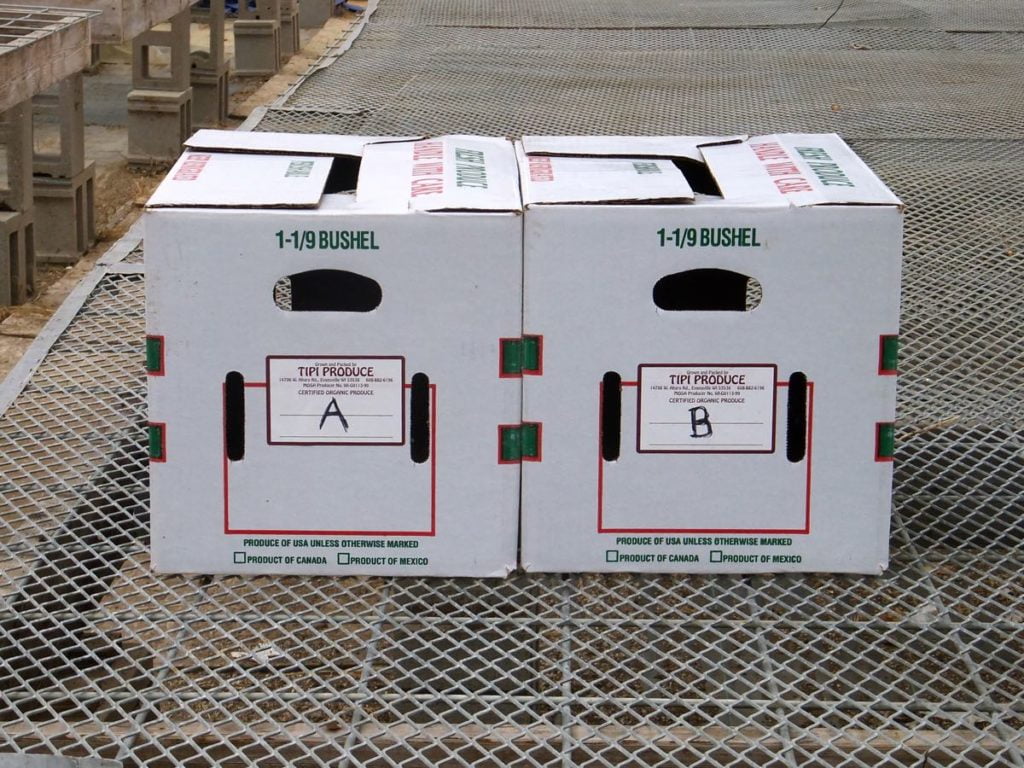
Your produce is in one box labelled “A” and one box labelled “B”. Bring lots of bags and containers.
Things you need to know about your winter share
* Your delivery will consist of two different boxes, labeled “A” and “B”. Take produce from one “A” box and one “B” box. The boxes contain different vegetables.
* Please pick up your boxes on the day of delivery, during the normal hours for your site.
* Bring extra bags or containers this time. Leave the Tipi boxes at your site, take the produce home in your own bags/containers.
* If you send someone to pick up your produce, make sure they know what to do.
Strategy
We hope you enjoy this shipment of veggies. Strategize to use them well, as some will last longer than others.
* These are the most perishable vegetables: Brussels sprouts, cauliflower.
* These are the next-most perishable: Leeks, Romanesco. Keep an eye on your butternut, potatoes and sweet potatoes. The last two are susceptible to drying out. Expect the largest butternuts to last the longest.
* These will last the longest: beets, cabbage, carrots, celeriac, garlic, red & yellow onions, parsnips and shallots.
Veggie List (Nov. 18/19, 2021)
Box “A”
Everything in this box can be stored cool or at room temperature. See notes below for more detail.
(Combined squash & sweet potatoes weigh 20 to 22 lb.)
Butternut squash, several
Special winter squash (‘Autumn Frost’ OR ‘Winter Sweet’)
Sweet potatoes, mixed ‘Beauregard’, ‘Covington’ & ‘Orleans’
Russet potatoes, 5 lb
Shallots, ~1 lb
Garlic, 3 – 4 bulbs (in shallot bag)
Box “B”
Refrigerate everything in this box, except the onions.
Beets, 3 lb
Brussels sprouts, 1 lb
Carrots, 5 lb
Cauliflower, 1 medium head
Celeriac, 1
Green cabbage, 1 head
Leeks, ~2.25 lb
Onions, 5 lb total
….. a mix of red ‘Blush’ and yellow onions
Parsnips, ~2 lb
Romanesco cauliflower, 1 medium head
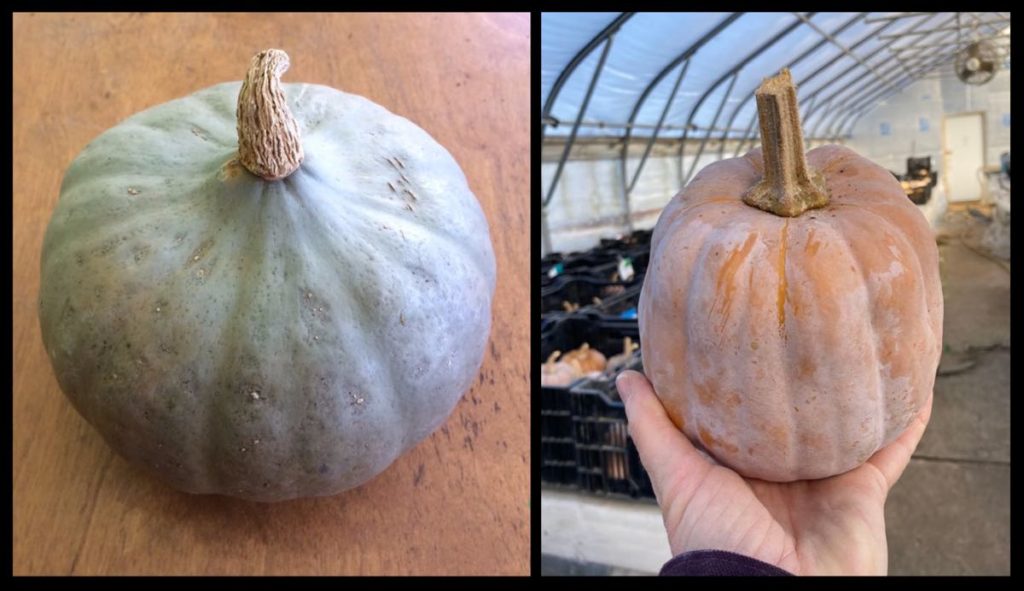
Everyone gets Winter Sweet (left) OR Autumn Frost squash (right) plus several butternuts.
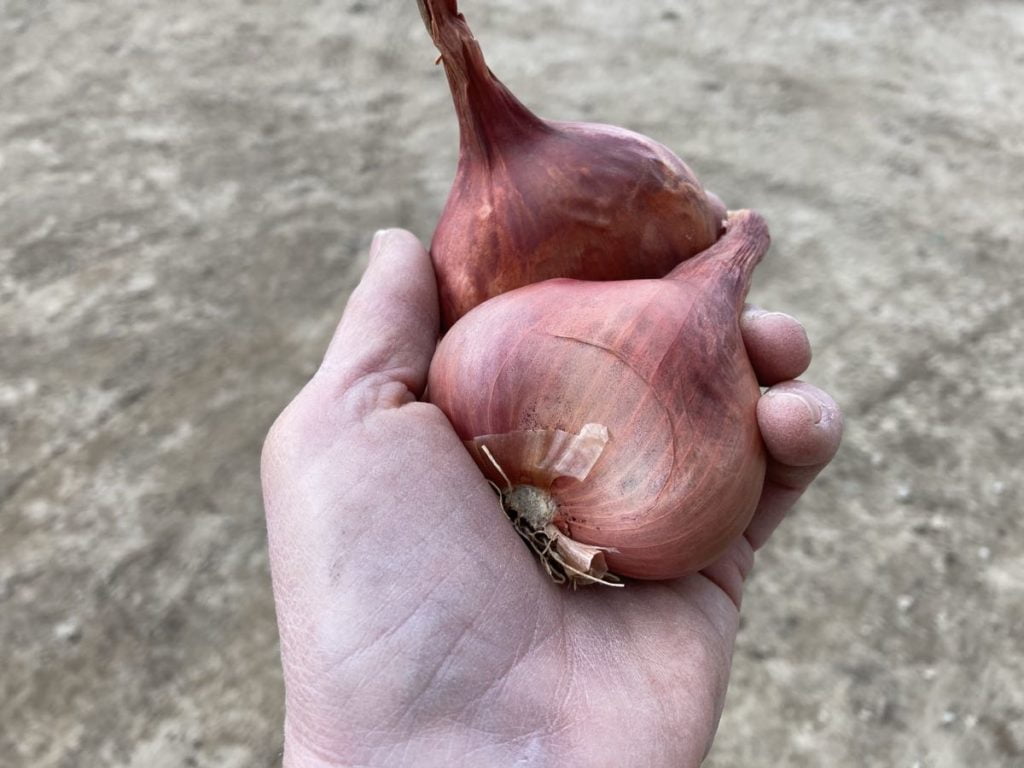
Shallots. Yours are packed in a paper bag with the garlic.
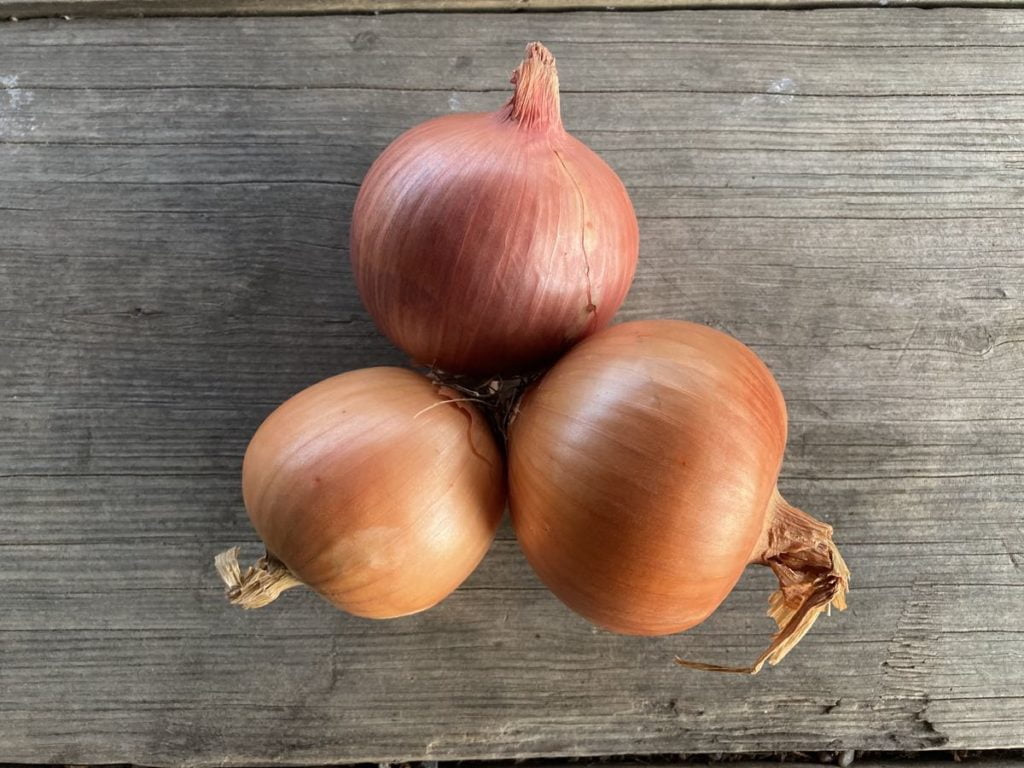
Top, ‘Blush’ red onion
Bottom, yellow onions
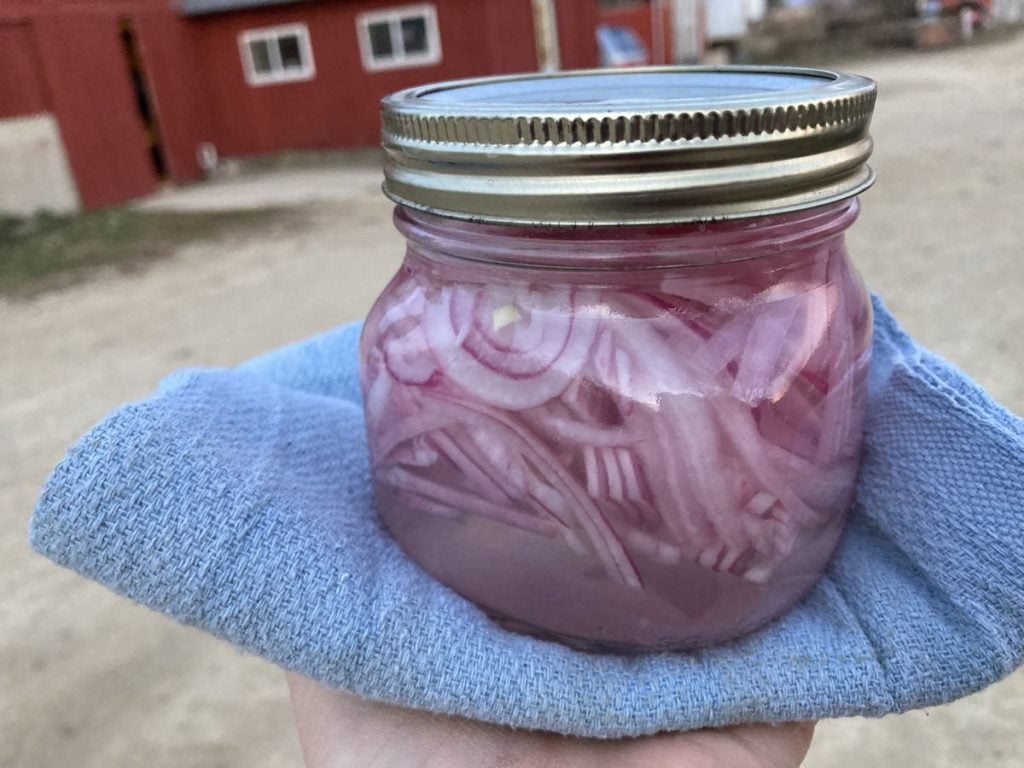
The ‘Blush’ onions are more pink than red, and excellent for long storage.
Beets – Refrigerate in a bag or container. Beets will store for two months or longer.
Brussels sprouts – Eat within 2 to 3 weeks.
Cabbage – Refrigerate.
Carrots, orange. Refrigerate in a plastic bag. Will keep for several weeks.
Cauliflower – Refrigerate. These should store for two weeks. Don’t be alarmed by the frost damage on the wrapper leaves. The heads are fine.
Celeriac – Will store for months in your fridge. Cut off chunks as needed. Peel before using. I find it easiest to cut the celeriac into flat slices, then peel.
Garlic – Store at room temperature. Some of your bulbs might be in halves. We continue opening the bulbs to check for any internal problems.
Green cabbage – Refrigerate. These are big. It’s OK to cut off chunks as needed.
Leeks. Refrigerate. In general, leeks are not a long-storage crop. You may need to strip off one or two outer leaves to freshen the leeks before you cook them.
Onions: Refrigerate or store in a cool, dark spot and protect from light. Exposure to light stimulates sprouting.
Parsnips (These look like large white carrots.) – Refrigerate in a plastic bag. Parsnips will store for several months but will darken in color. That is a harmless change.
Potatoes; russets – Can be stored at room temperature or in a cool spot, but must be kept in the dark so they do not turn green. A cloth or loose plastic bag draped over the paper bag will slow moisture loss, but do not close the plastic bag. Potatoes store longer if kept cool. Around 40 – 50 F is ideal. These potatoes were grown by the Igl family near Antigo.
Russets– We got the big ‘baking’ grade so you have nice bakers for Thanksgiving. Excellent for baked or mashed potatoes.
Romanesco cauliflower (beautiful chartreuse green, spiraled head) – Refrigerate. These should store well, eg for a few weeks.
Shallots (look like small red onions) – Good for salad dressing. We’re still learning how to grow shallots and are thrilled to have a small bag for everyone!
Sweet potatoes – We’re sending a mix of two indistinguishable varieties, Beauregard and Covington. Both have excellent flavor and sweetness. Store at room temperature, no lower than 55 F, but 60+ F is better. Keep them on your kitchen counter where it’s easy to keep an eye on them. I like to keep ours in a paper bag so they don’t dehydrate. Cook promptly if they start to soften. The roots come in a wide ranges of sizes and all are good.
WINTER SQUASH – Store all winter squash cool and dry. 60 F is ideal. Do not put in a plastic bag. Check your squash regularly and eat promptly if flaws develop.
Autumn Frost (For some sites, frosted pumpkin) – These beautiful frosted squash have both pumpkin and butternut squash breeding in them. They cook and taste like an unusually good butternut, with rich, smooth texture. They are quite nice. The skin is elible.
Winter Sweet (For some sites; dark grey) – These storage squash will be ready to eat in December or January. The metal-gray exterior hides deep orange, flaky flesh. Simple preparation is best for this flavorful squash. Cut into slices or chunks, rub with oil and roast in 400 degree oven. We like to eat the squash with a garlic-yogurt dipping sauce. The skin is edible.
Butternut winter squash (All sites; tan, oblong) – We’ve sent several varieties, some of which store better than others. Expect the largest butternuts to store the longest. If your butternuts show signs of drying or wrinkling, use them promptly. They will still taste great, but it’s a sign that they are nearing the end of their storage life. Remember, you can cook, mash and freeze the squash for future use. I find that you can refrigerate cut raw squash for up to one week. This runs counter to the accepted way to store squash, but is useful if you want to cook just half a squash. Some of them are big! Try microwaving your squash for one to two minutes before cutting or peeling. This softens the squash and makes a large butternut easier to handle.
Thanksgiving Menus
It’s time for our annual Thanksgiving menu round-up! Right now, websites are loaded with great recipes suited to your Storage Share vegetables. Peruse and bookmark soon. The Thanksgiving collections are usually taken down quickly after the holiday but individual recipes are not. I’ve gathered a long list of recipes to try this winter.
Smitten Kitchen
I love Deb Perelman! She has an extensive list of Thanksgiving recipes collected over the years. I really trust her recipes.
Food52.com
Once again, the lively Food52.com site has outdone itself with an extensive Thanksgiving recipe collection. They’ve named it “AutoMagic Holiday Menu Maker“. It’s organized by type of dish. Scroll down to these sections for lots of veggie-centric dishes. There are soooo many appealing dishes.
3. Soups & Salads
4. Main Attractions/ Not meat subsection
5. Starchy Things
6. Vegetables
Thanksgiving meals by recent immigrants
https://www.rachaelraymag.com/recipes/a-totally-american-thanksgiving-immigrant-style
In this 2017 post, Rachel Ray asked first- and second-generation American chefs to tell us how they mix cultures and cuisines to create Thanksgiving dinners. The recipes include:
Persian-Style Roast Turkey with Pomegranate-Walnut Gravy
Beet & Tahini Dip (Khlat)
Jerk Sweet Potatoes
.
.
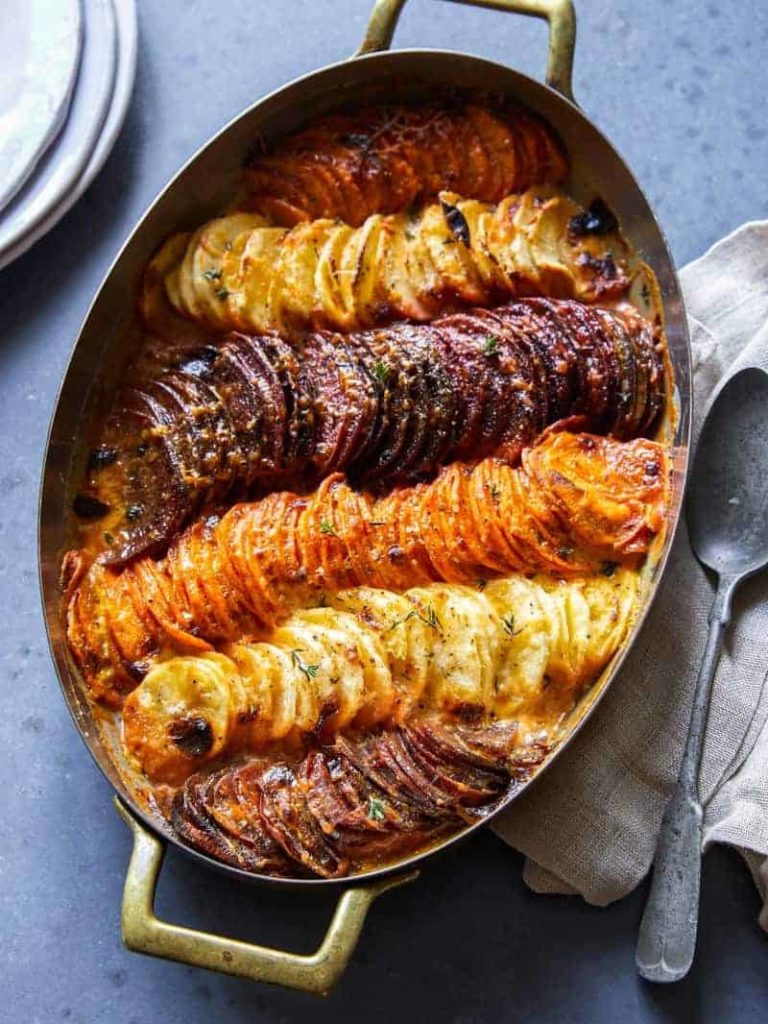
Cheesy Root Vegetable Gratin
From Spoon Fork Bacon
Look at that gorgeous casserole. The recipe has well-thought-out instructions. I have a difficult history with these kinds of dishes (4 hours in the oven, too much butter, etc) but this one worked great. See my version below.
.
.
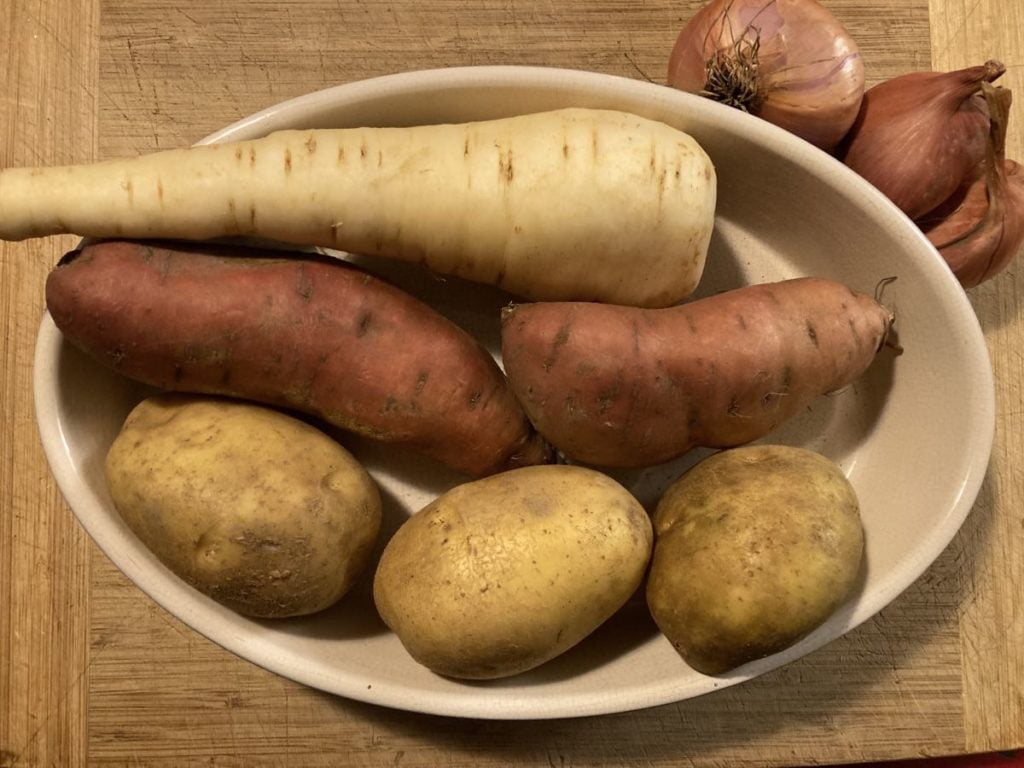
Beth’s Gratin
I made the recipe above with these adaptions and it was still delicious! And pretty!
– I substituted oat milk for the heavy cream but didn’t change the amounts of cheese. Honestly, skipping the cream did not matter.
– I used potatoes, sweet potatoes and parsnips, skipping beets to avoid the bleeding issues described in the original recipe.
– I added sliced shallots between every few slices.
– I baked it covered with foil for 45 minutes, then added gruyere cheese as directed and baked an additional 15 minutes.
It worked well to lay the raw vegetables in my baking dish to judge how much to slice. I used all shown in the top photo except one potato, including the shallots visible at the edge of the dish. We liked all three vegetables but the parsnips were the star so I’m making a sweet potato and parsnip version for Thanksgiving.


